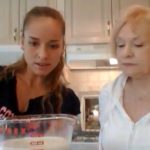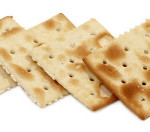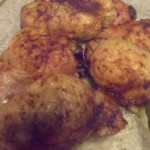How To Make Your Own Perfume
 Today’s recipe ideas, you won’t eat…You’ll smell. You may be carried away to a time past, or be energized by a wonderful smelling future. At any rate, you’ll be in the kitchen, mixing and blending your way to happiness.
Today’s recipe ideas, you won’t eat…You’ll smell. You may be carried away to a time past, or be energized by a wonderful smelling future. At any rate, you’ll be in the kitchen, mixing and blending your way to happiness.
* Disturbing Fact: When you buy a bottle of perfume at a store, most of the cost goes into the packaging, advertising, sales profit and tax. Only a small percentage, actually around ten percent, is dedicated to the costs of the scents themselves.
So, why buy when you can make your own perfume? Not only will you be able to save some money, but you’ll have a blast pursuing the perfect perfume for you.
One of the greatest advantages of making your own perfume is that you don’t have to worry about chemicals and preservatives going onto your skin, like the ones they add to commercial perfumes. Since you’re more likely, and more intelligently, going to use natural ingredients, you don’t have to worry about the negative effects of synthetic materials on your body.
However, care should still be taken when using various essential oils. Some people might still have sensitivities or allergic reactions to certain types of oils. It is, therefore, important to know, or be familiar, with your own body chemistry before experimenting with perfume blending.
Firstly, let’s differentiate between the various types of perfumes.
Basically, a perfume is a mixture of aromatic compounds and diluted in alcohol and water. The amount of aromatic oils dissolved in a blend determines if it can be called a perfume or a cologne. Arranged from the highest concentration of oils to the lowest: perfume, eau de parfum, eau de toilette, eau de cologne and body splash.
When we say perfume, the blend of aromatic oils is from 25 to 40%. Eau du parfum, meanwhile, are 15-30% aromatics. Eau du parfum has even lighter aromatic oil contents. This type of scent usually has around 5-15% aromatic compounds. Eau de cologne, sometimes referred to as body splash, has only 3-5% aromatics. Body splash are ideally used after you take a bath or shower.
When you make your own perfume, you get to choose which solvent you would like to use to dilute the blend.
Available at your disposal are either jojoba or alcohol. Both have distinct differences and benefits.
Jojoba is great for perfume blends because it never turns rancid.
When you have created your own perfume blend, it is best that you use the perfume only on your pulse points. If you use it elsewhere, on more parts of your body, you might overdo the scent.
Diluting the blend the traditional way entails that you use grain alcohol or a high grade proof of vodka. Alcohol makes the blend more volatile. The problem with alcohol is that you have to let the perfume blend evolve. If you don’t, the scent will smell more like an alcohol rather than a perfume. Usual proportions of alcohol and perfume blend is about three or four ml of the blend combined with five or 10 drops of alcohol.
Making your own perfume should be fun. Don’t delve too much on the technicality of blending perfumes. Explore and try to make combinations that are unheard of. You never know…the resulting blend might be just perfect for your body chemistry.
Scents and fragrances react differently when applied to your body. Choosing one that fits you is like choosing the right color of dress, or the right pair of shoes to wear. One perfume may smell wonderful on one person, and may be quite revolting on another person.
Perfumes cannot just be worn arbitrarily. The resulting scent might be catastrophic. That’s why you need to experiment more when making your own perfume. Try various combinations of scents until you find the perfect one, made just for you.
***
I hope you enjoyed this Food Fun post on Cooking With Kimberly! Until next time…
Eat (& Smell) Deliciously,
Kimberly Edwards 🙂
P.S. For more great information and recipes on how to make your own perfume, check out this awesome book:
[tags]how to make perfume, perfume, jojoba, fragrance, how to make your own perfume[/tags]
Similar Posts:
- How to Make Holiday Citrus Surprise Pot Pourri on the Stove
- How to Make Superfine Sugar at Home
- Before You Drive, Take The Online Breathalyzer
- Food Senses: Hunger & Eating
- Smoking Destroys Your Taste Buds – Taste & Smell










July 24, 2009
Thanks for posting about this, I would love to read more about this topic.